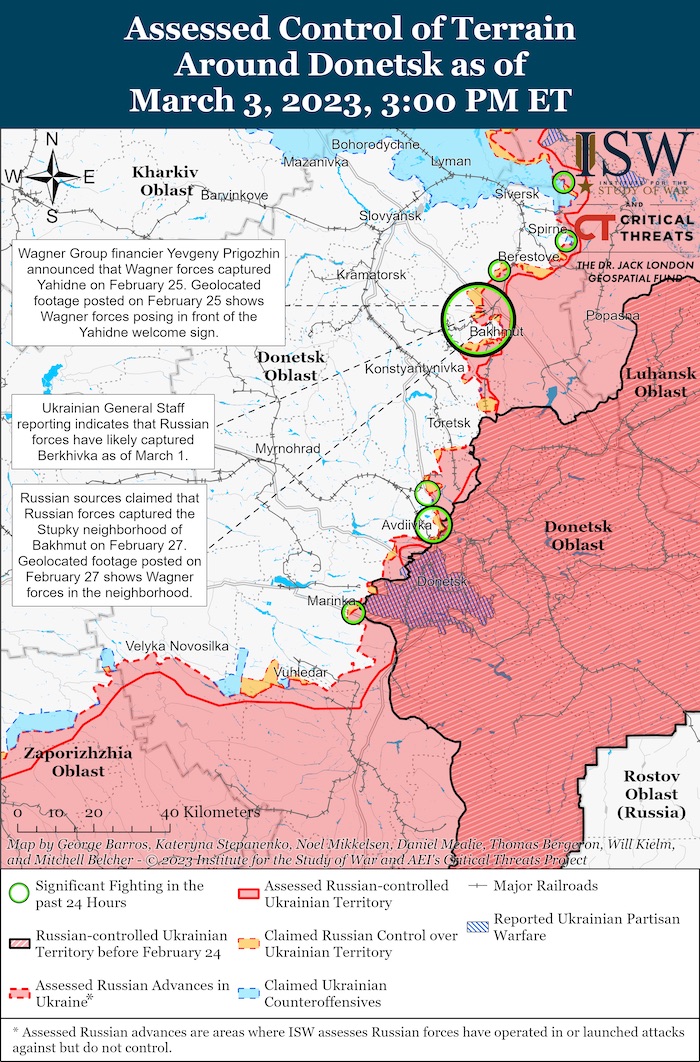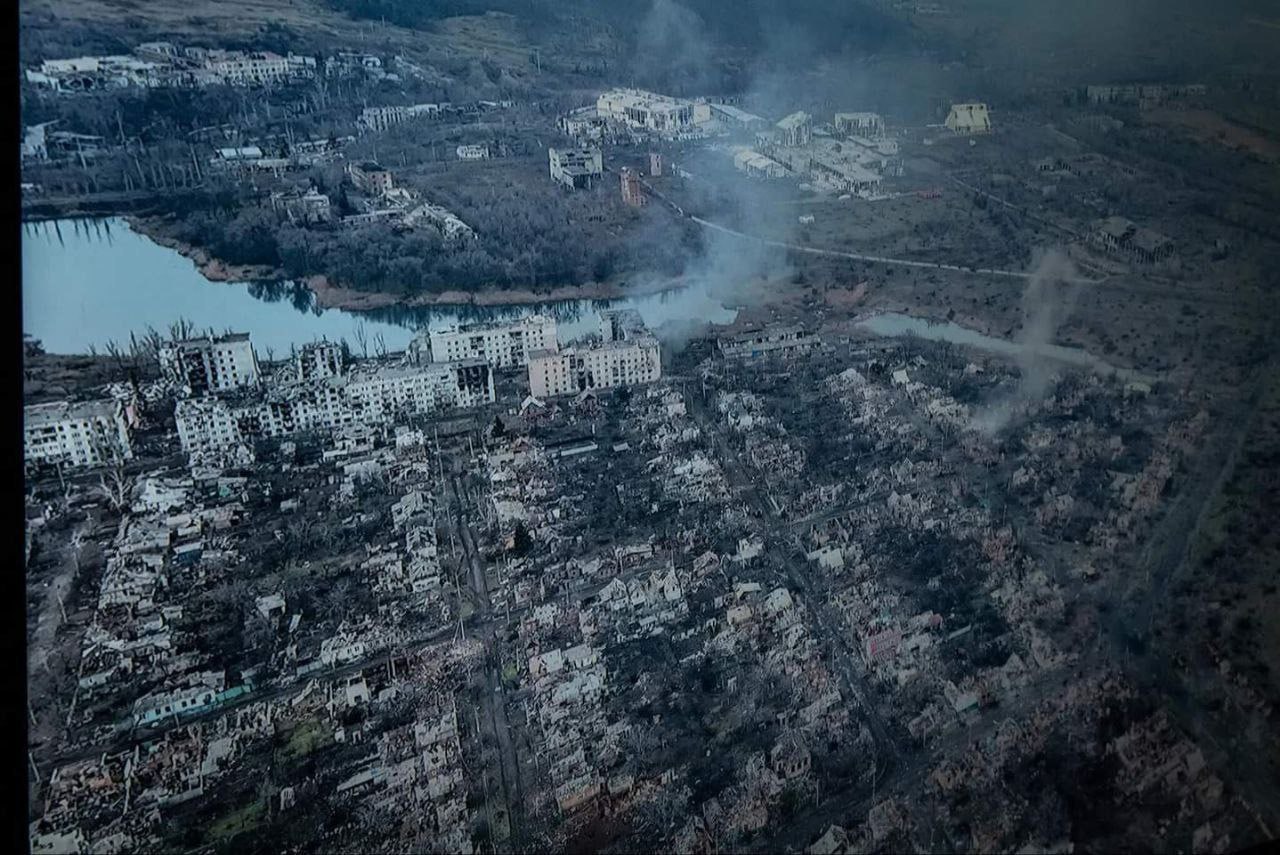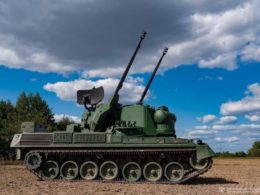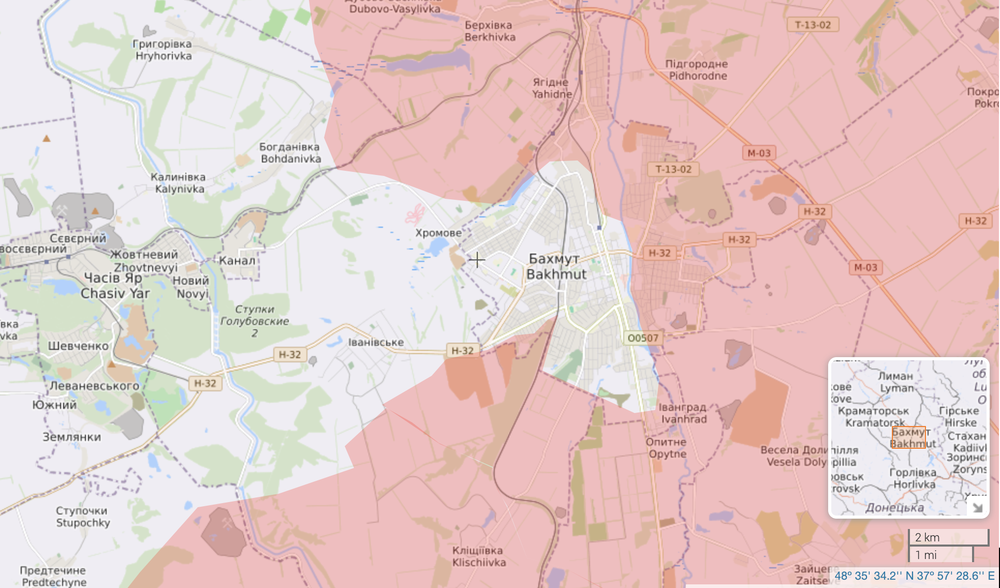In its March 4 assessment of Russia's offensive campaign, the US-based think tank Institute for the Study of War says that Russian forces will not likely be able to encircle the city of Bakhmut, Donetsk Oblast, soon despite having a positional advantage in certain parts of the city.
Russian forces appear to have secured a sufficient positional advantage to conduct a turning movement against certain parts of Bakhmut but have not yet forced Ukrainian forces to withdraw and will likely not be able to encircle the city soon.
Russian forces made one limited confirmed
advance near Bakhmut on March 4. As ISW reported on March 3, Ukrainian forces are likely setting conditions for a controlled fighting withdrawal out of particularly difficult sectors of eastern Bakhmut, although it is not clear that Ukrainian commanders have decided to withdraw at this time.
Russian sources claim that Wagner Group elements have made gains in northeastern and eastern Bakhmut over the past few days, creating a tactically challenging turning movement in urban areas in northern Bakhmut.
Ukrainian officials have recently reiterated
that Ukrainian forces still control the situation in Bakhmut but have noted that circumstances are increasingly complicated and that the Wagner Group has committed its most advanced and prepared elements to assault operations in the area.

Russian advances in Bakhmut have been slow and gradual and do not suggest that Russian forces will be able to encircle Bakhmut soon, much less that they will be able to take the city by frontal assaults. The Russians have, rather, managed to push close enough to critical ground lines of communication from the northeast to threaten Ukrainian withdrawal routes in a classical turning movement. The purpose of a turning movement is to force the enemy to abandon prepared defensive positions and is different from the aim of an encirclement, which is to trap and destroy enemy forces. The Russians may have intended to encircle Ukrainian forces in Bakhmut, but the Ukrainian command has signaled that it will likely withdraw rather than risk an encirclement.
ISW assesses that Ukrainian forces are far more likely to withdraw than to become encircled and that the Ukrainians might still be able to hold their positions in Bakhmut if they choose to try. Russian forces have been suffering high casualties in these advances, and Ukrainian commanders’ assessments of the likelihood that they can force Russian attacks to culminate near or behind their current positions balanced against the risk of losing access to essential withdrawal routes will likely guide the Ukrainian decision to stay or pull back.
Read also:
Ukrainian forces likely setting conditions for controlled withdrawal from Bakhmut parts – ISW
Ukraine SOF commander inspected units defending Donetsk’s Bakhmut
Ukrainian-held resupply routes out of Donetsk’s Bakhmut are increasingly limited – British intel




